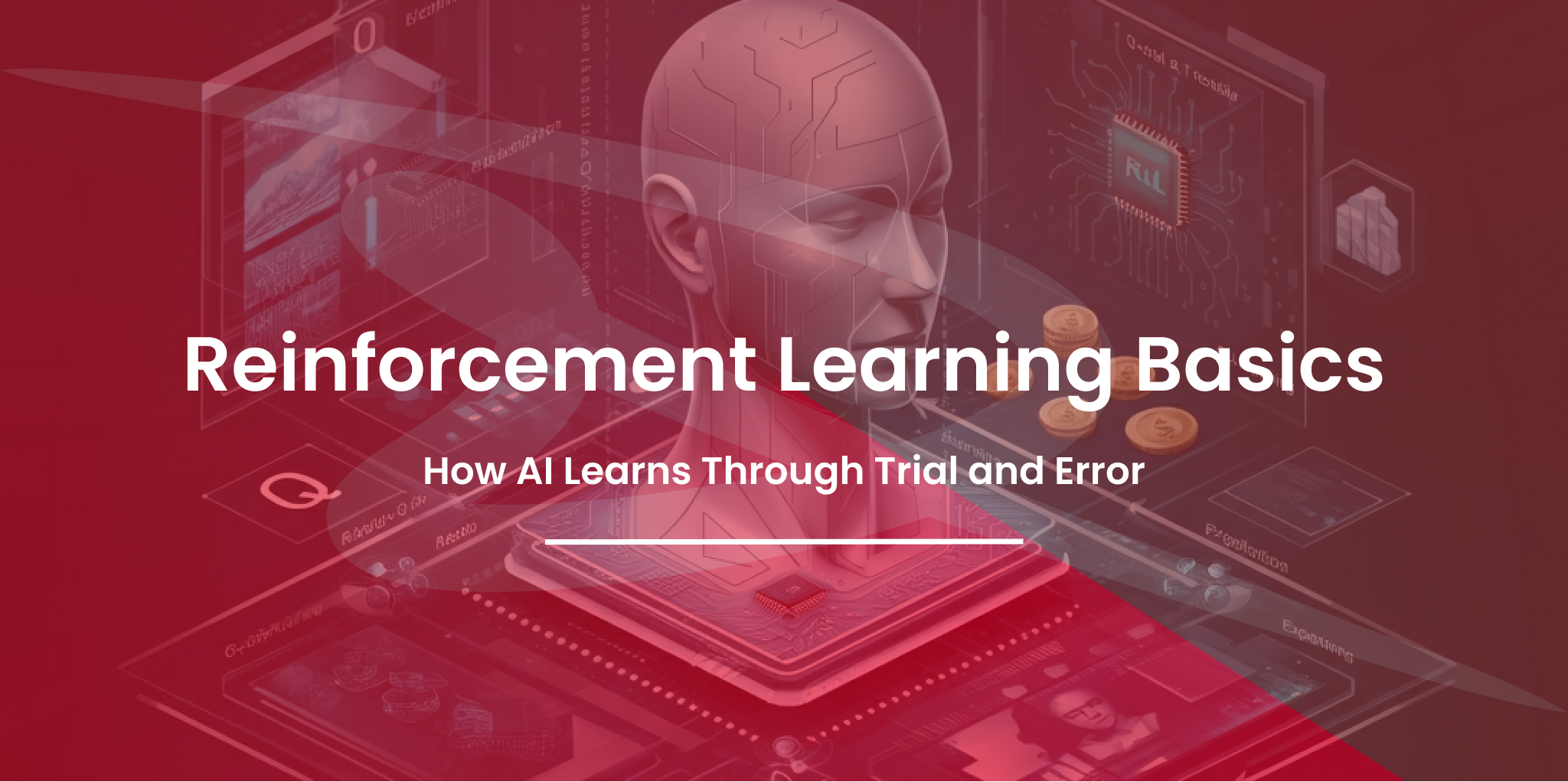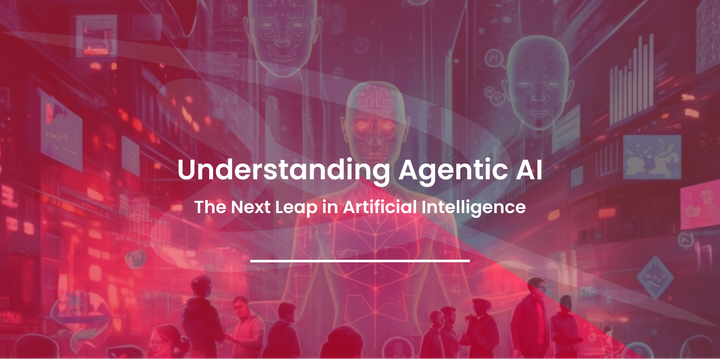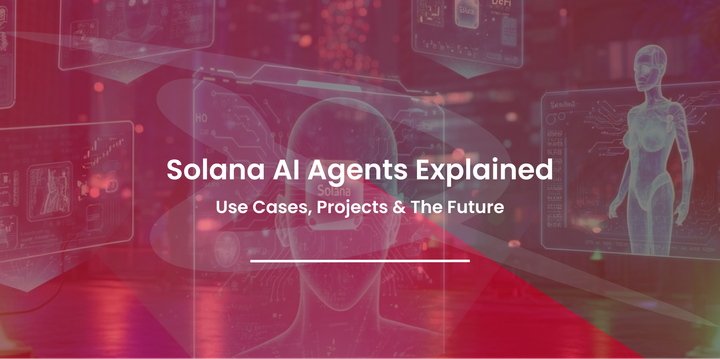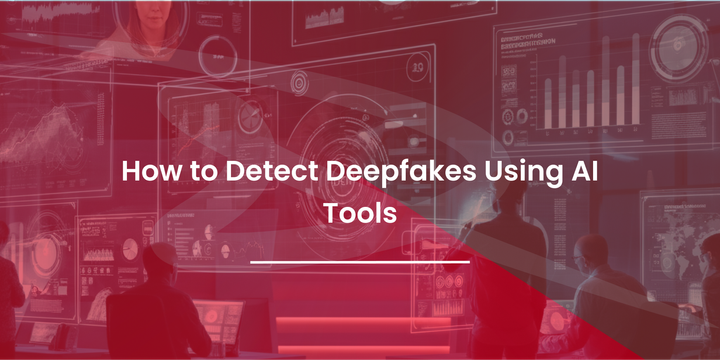Reinforcement Learning Basics: How AI Learns Through Trial and Error
Explore reinforcement learning basics, from trial-and-error learning to applications in gaming and robotics. Start your RL learning today!

Artificial Intelligence (AI) is revolutionizing the way machines perform tasks. But have you ever wondered how AI systems learn to make decisions in complex situations? This is where Reinforcement Learning (RL) comes in—a fascinating subfield of machine learning where agents learn through trial and error to achieve a specific goal.
This blog will guide you through the fundamental concepts of reinforcement learning, how it works compared to other learning methods, real-world applications, challenges, and what the future holds for RL. By the end, you'll not only have a clear understanding of RL but also why it’s one of the most exciting areas of AI research.
What is Reinforcement Learning?
At its core, Reinforcement Learning (RL) is a learning paradigm where an agent interacts with an environment and learns to make decisions by maximizing cumulative rewards over time. Unlike other types of machine learning, RL focuses on learning through experience, similar to how humans learn from feedback like rewards and penalties.
How RL Differs from Supervised and Unsupervised Learning
- Supervised Learning relies on labeled data to learn a pattern. For example, it learns to classify images as "cat" or "dog" based on pre-labeled examples.
- Unsupervised Learning works with unlabeled data to find hidden structures, such as clustering similar customer behaviors.
Reinforcement Learning, on the other hand, is neither supervised nor unsupervised. It uses trial-and-error methods to learn. The RL agent doesn't start with correct examples; instead, it experiments with different strategies and improves over time based on feedback.
Real-world Applications of RL
Reinforcement Learning isn't just theoretical—it's advancing industries.
- Gaming: Algorithms like AlphaGo and OpenAI Five mastered games through RL.
- Robotics: RL helps robots learn how to walk, pick up objects, and interact with the physical world.
- Finance: Traders use RL for optimizing investment strategies.
- Healthcare: Personalized treatment plans powered by RL adapt in real-time based on patient data.
Core Concepts of Reinforcement Learning
Agent, Environment, and Actions
- Agent: The decision-maker (a robot, software, or algorithm).
- Environment: The world the agent interacts with, which includes challenges and opportunities (e.g., a chessboard for a chess-playing AI).
- Actions: Every choice an agent can make (e.g., moving a chess piece).
Rewards and Penalties
Rewards signal success, while penalties discourage bad actions. For example, in a video game, scoring points is a reward, while losing a life is a penalty.
States and Policy
- State: The current situation the agent is in. For example, the specific layout of pieces on a chessboard at any given moment.
- Policy: The agent’s strategy to decide the next action based on the current state.
Exploration vs. Exploitation Trade-off
- Exploration is trying new actions to discover potentially better strategies.
- Exploitation is sticking to actions the agent already knows will likely yield high rewards.
Balancing exploration with exploitation is one of RL’s toughest challenges.
The Reinforcement Learning Process
How an Agent Interacts with the Environment
Here’s how the RL process works step-by-step:
- The agent takes an action within the environment.
- The environment reacts, providing a reward or penalty.
- The agent updates its strategy based on the feedback and transitions into a new state.
Receiving Rewards and Updating Actions
Rewards motivate the agent to repeat good behavior, while penalties discourage suboptimal actions. By refining its actions, the agent gradually learns the optimal strategy.
The Role of Markov Decision Processes (MDPs)
Many RL problems are modeled as Markov Decision Processes, which offer a mathematical framework for defining states, actions, and rewards to solve decision-making problems systematically.
Key Algorithms in Reinforcement Learning
Model-Free vs. Model-Based RL
- Model-Free RL doesn’t require a model of the environment—it learns directly through trial and error.
- Model-Based RL involves creating a simulation of the environment to aid learning.
Q-Learning – Learning Action Values
Q-Learning is a model-free algorithm where the agent learns the value of taking specific actions in specific states. It updates a Q-table that maps states to the best possible actions.
Deep Q-Networks (DQN)
Deep Q-Networks utilize deep learning to handle complex environments where Q-tables break down, such as video games or robot control.
Policy Gradient Methods
Instead of learning the value of states or actions, policy gradient methods optimize the policy directly—making them well-suited for continuous action spaces.
Actor-Critic Methods
Combining the best of value-based (critic) and policy-based (actor) methods, actor-critic algorithms are increasingly popular in solving advanced RL problems.
Applications of Reinforcement Learning
Gaming
AlphaGo and OpenAI Five are prime examples of RL dominating strategy-based games, outperforming even expert human players.
Robotics and Autonomous Systems
Robots trained with RL can achieve precise, real-world tasks like assembling parts or navigating unpredictable environments.
Finance and Trading Strategies
RL optimizes trading by adapting to market behavior, aiming to maximize profits while minimizing risks.
Healthcare and Personalized Treatment Plans
RL plays a critical role in developing adaptive treatment strategies, especially for dynamic conditions like diabetes or cancer.
Challenges and Limitations of RL
- High Computational Cost
Training RL models requires enormous computational resources, making it expensive and time-consuming.
- Reward Shaping and Sparse Rewards
Designing effective reward systems is challenging. Sparse rewards, where achieving a goal is rewarded only after long tasks, make learning extremely slow.
- Balancing Exploration and Exploitation
Switching between exploring new strategies and sticking to good ones can lead to suboptimal or unstable learning.
- Ethical Concerns in Autonomous AI
Autonomous systems, from self-driving cars to decision-making bots, raise questions about accountability and fairness.
Future Trends in Reinforcement Learning
Advances in Deep RL and AI Safety
Combining deep learning with RL has already yielded breakthroughs. The focus is now shifting toward making RL-based systems safer and more interpretable.
Transfer Learning in RL
Researchers are working on transfer learning, where an agent reuses learnings from one task to benefit another—potentially speeding up RL across industries.
Applications in Real-World Decision-Making
From urban planning to supply chain logistics, real-world problems continue to invite innovative reinforcement learning solutions.
FAQs: Reinforcement Learning Basics
- How does reinforcement learning differ from traditional machine learning?
RL learns through trial and error without relying on labeled data.
- Is reinforcement learning only used for gaming?
No! RL has applications in robotics, healthcare, finance, and more.
- What programming languages are best for RL?
Python remains the top choice due to libraries like TensorFlow, PyTorch, and Rllib.
- Can I start learning RL without deep learning knowledge?
Yes, understanding algebra and basic Python programming is enough for a start.
- What are some beginner-friendly resources to learn RL?
Books like "Reinforcement Learning: An Introduction" by Sutton and Barto and platforms like Coursera and DeepMind’s RL reading list.
- How does reinforcement learning apply to robotics?
It helps robots learn adaptive behaviors such as walking, gripping, or manipulating objects.
- What is the biggest challenge in RL today?
Balancing computational efficiency with robust learning remains a major hurdle.
Embark on Your RL Journey
Reinforcement Learning is shaping the future of AI, equipping machines to tackle complex decision-making tasks autonomously. Whether you’re fascinated by its potential or want to build your skills, RL is worth the investment of your time and curiosity.
If you're ready to start, Python libraries like Gym, PyTorch, and introductory courses are excellent resources to begin your hands-on RL experience.
Happy learning—because the next big RL breakthrough might just come from you!




Comments ()